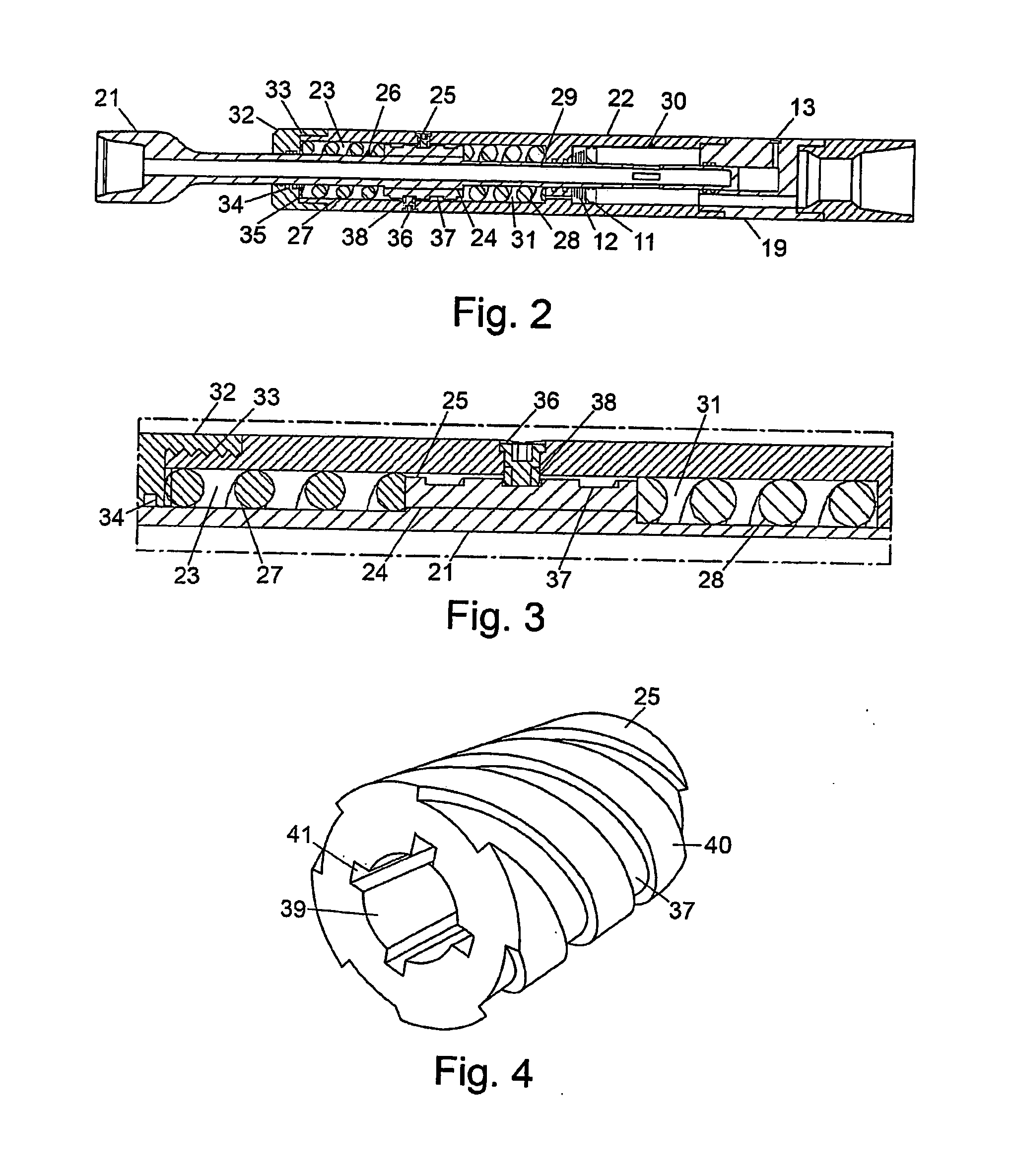Downhole device
a drilling device and downhole technology, applied in the field of drilling downhole devices, can solve the problems of affecting affecting the efficiency of drilling process, and little success in creating a panacea for stick-slip or the success of diminishing the harmonics of drill string, so as to achieve the effect of ensuring the efficiency and effectiveness of drilling process
- Summary
- Abstract
- Description
- Claims
- Application Information
AI Technical Summary
Benefits of technology
Problems solved by technology
Method used
Image
Examples
second embodiment
OF THE INVENTION
[0187]In both these methods, the modified sleeve assembly [50] is constructed from non-magnetic or magnetically transparent material and is equipped with seals [48], [49], which hermetically seal the volumes between the upper, proximal, chamber [31] and lower, distal, chamber [23]. In this configuration the sleeve acts as a toroidally configured piston means equipped with fluid bypass means [47]. The emplacement and distribution of seals along the length of the tool can be used to form different arrays and arrangements of interconnected fluid chambers for the purpose of controlling fluid movement and transfer across two or more relevant chambers. In this instance the combination of seals at the extremities of each of the chambers combine to form a proximate reservoir chamber [31] and a distal reservoir chamber [23] containing magneto-rheological fluid [51] therein. The reservoir chambers are connected by fluid choke ports [47] which are preferentially contained withi...
third embodiment
OF THE INVENTION
[0193]Proportional Damping Strokes
[0194]As may be inferred from the description of the previous embodiment, electro magnetic coils [53] may be substituted for rare-earth magnets [52]. Although their installation represents an overall increase in system complexity, the presence of instrumentation controlled electronic systems [10] equipped with clock timing capability allows for more precise application of timed, variable control voltages to the magnetorheological fluids [51] in conjunction with advantageous phase shifting of damping capability. In summary, the EM Coil configuration of the instant device illustrated in FIG. 13 allows greater control over the MR fluid [51] elements of the design.
[0195]Substitution of EM coils [53] as means for controlling the MR Fluid [51] requires the addition of control instrumentation [10]. The instrumented device may be preferentially equipped with sensors [not illustrated] which provide measurements of shock, acceleration and freq...
PUM
 Login to View More
Login to View More Abstract
Description
Claims
Application Information
 Login to View More
Login to View More - R&D
- Intellectual Property
- Life Sciences
- Materials
- Tech Scout
- Unparalleled Data Quality
- Higher Quality Content
- 60% Fewer Hallucinations
Browse by: Latest US Patents, China's latest patents, Technical Efficacy Thesaurus, Application Domain, Technology Topic, Popular Technical Reports.
© 2025 PatSnap. All rights reserved.Legal|Privacy policy|Modern Slavery Act Transparency Statement|Sitemap|About US| Contact US: help@patsnap.com



